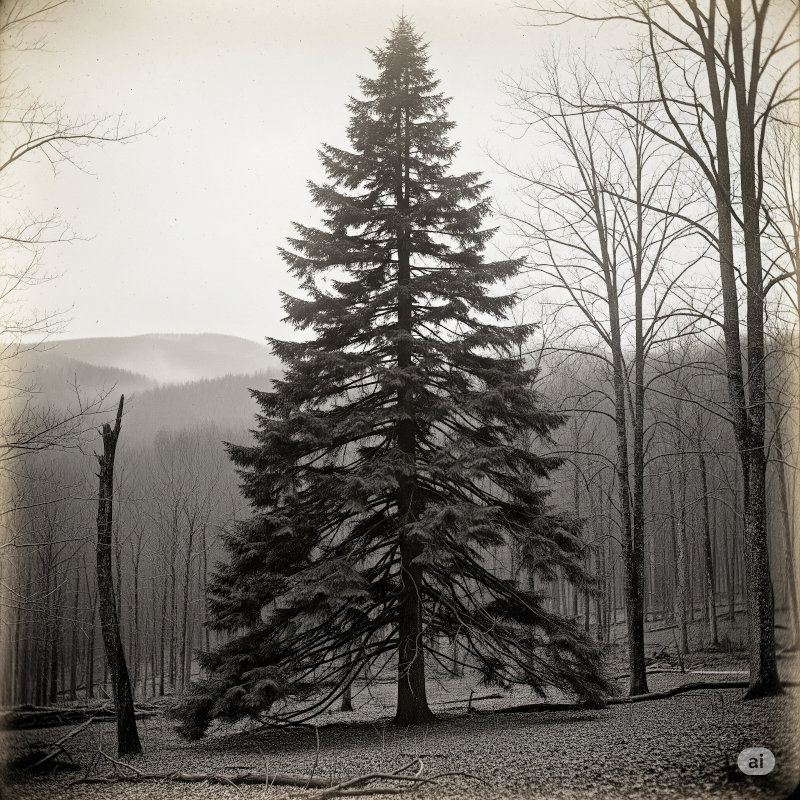Red Spruce (Picea rubens) in New York, 1870–1900

Scope: Red spruce’s role in the Adirondacks and upland New York as a structural softwood, musical-instrument stock, and an emergent pulpwood source in the late nineteenth century.
I. Range & Habitat
Red spruce dominated cool, moist high-elevation stands in the Adirondacks and was more patchily present in the Catskills and northern highlands. It favored cold slopes, wetlands margins, and upper elevations where white pine and hardwoods were less competitive.
II. Wood Properties
- Appearance: Pale, creamy to light brown; fine, even texture with a straight grain.
- Mechanical Qualities: Good strength-to-weight ratio, resonant properties (valued in soundboards), and workable with hand tools.
- Durability: Moderately durable if kept dry; less rot resistant than chestnut or oak.
III. Key Uses (1870–1900)
| Application | Why Red Spruce? | Notes |
|---|---|---|
| Framing & general lumber | Light, straight, easy to mill | Used where pine scarce |
| Pulpwood (groundwood) | Fibre suitable for paper | Pulp industry expansion in 1880s–90s increased demand |
| Musical instruments (soundboards) | Resonant, uniform grain | Selected for quality, small clear sections |
| Boat spars & poles | Light and stiff | Used regionally in small watercraft |
IV. Harvesting, Transport & Mills
- Felling: Axe and two-man crosscut; steep slopes made skidding difficult—often requiring specialized skid roads or cable systems later in the era.
- Transport: Winter sleds, river drives where available, and later narrow gauge rails or logging tramways in rugged areas.
- Milling: Local and portable steam mills processed spruce; the rise of groundwood pulp technology increased demand for smaller-diameter spruce that previously had low merchantable value.
V. Age, Growth & Quality
Red spruce in merchantable size often ranged from 80–200 years depending on site. Slow growth at higher elevations produced fine, tight rings and clear, knot-free boards prized for soundboards and fine millwork. Conversely, lower-elevation or denser stands yielded smaller trees more suitable for pulpwood.
VI. Economic Shifts & the Rise of Pulp
Late-century innovations in paper manufacture (groundwood processes and mechanical pulping) created a robust new outlet for small spruce logs and bolts. This shift made previously marginal spruce stands economically valuable and shaped logging patterns in the Adirondacks toward more intensive utilization of softwood biomass.
Field & Preservation Notes
Look for red spruce in surviving millwork where pale, straight-grained boards occur; instrumentmakers prized small, clear soundboard blanks, which occasionally appear in historic furniture and shop stock. Preserve dry spruce members—once wet or decayed, spruce loses many of its desirable structural and acoustic properties.
VII. Summary
Between 1870 and 1900, red spruce was a regionally critical softwood: framing and general lumber in northern highlands, a nascent and then-growing source of pulp for paper mills, and a specialty wood for musical instruments. The species’ importance rose as technology and markets evolved, illustrating how industry shaped which species were most actively harvested in the pre-chainsaw century.
